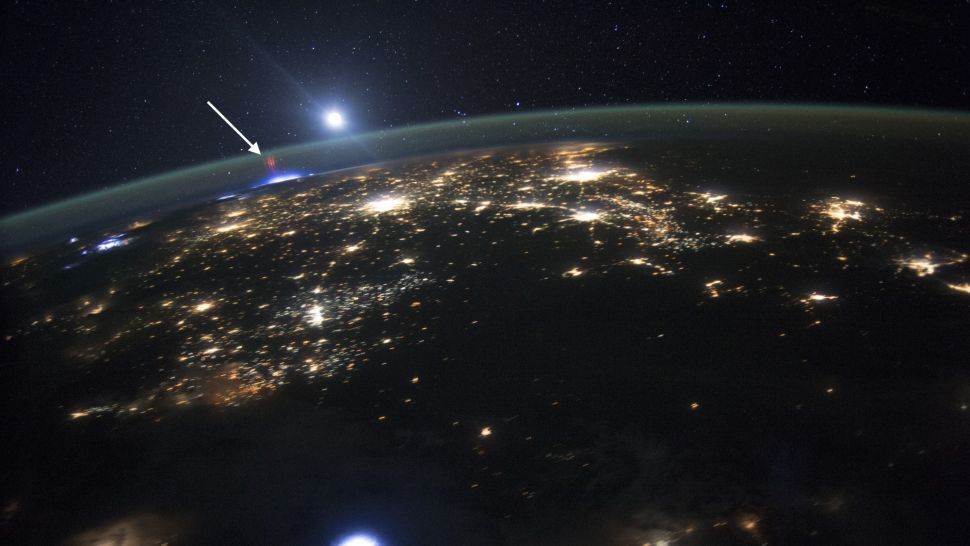29.10.2022

Sprites (arrowed) spotted from orbit by Expedition 44 astronauts on board in the International Space Station in 2015. (Image credit: NASA)
A new crowdsourcing science project called "Spritacular" is asking skywatchers to use their digital cameras to try to capture images of unusual electrical discharges above thunderstorms.
These discharges, known as Transient Luminous Events (TLEs), better known as sprites, remain mysterious 33 years after they were first captured on camera.
Eyewitness reports of red flashes appearing above thunderstorms date back to the early eighteenth century. However, it was only in July 1989 that researchers from the University of Minnesota testing a prototype low-light camera for use during a rocket launch recorded sprites above a storm by chance.
Unlike conventional lightning that forks downwards to the ground, TLEs are directed upwards and occur about 50 miles (80 kilometers) off the ground, in the ionosphere. Also unlike conventional lightning, TLEs are not hot. Scientists think that cold plasma fluorescing produces sprites, and they seem to be mostly triggered by flashes of positively charged conventional lightning in the lower atmosphere.
However, the exact mechanism that produces sprites remains a mystery, as is how often they occur, what role they play in transporting energy through Earth's atmosphere, and whether they have a connection to a type of atmospheric wave that ripple through the sky called gravity waves (not to be confused with gravitational waves).
To try to rectify this lack of understanding, Burcu Kosar of NASA's Goddard Space Flight Center is leading a NASA-funded joint project between NASA and the Catholic University of America in Washington, D.C. Called "Spritacular," this citizen-science project is the first of its kind and aims to collate hundreds or even thousands of recordings of sprites in action.
"People capture wonderful images of sprites, but they're shared sporadically over the Internet and most of the scientific community is unaware of these captures," Kosar said in a statement. "Spritacular will bridge this gap by creating the first crowdsourced database of sprites and other TLEs that is accessible and readily available for scientific research."
Experienced "sprite chasers" will be on hand to provide educational resources and support to members of the public uploading their hard-won images. As the database of images of different types of sprites grows, users will be able to compare their own images with others.
Skywatchers have spotted a whole slew of types of TLE, including diffuse plumes, bright and spiky tendrils that seem to dance and flit above storm clouds and go by exotic names such as ELVES (Emission of Light and Very Low Frequency perturbations due to Electromagnetic Pulse Sources; these are faint, flattened glows that last about a millisecond), halos, blue jets and gigantic jets.
It could be that Spritacular will also discover new forms of TLE.
Join the project by uploading your images of possible sprites to the team's website. If your image is used to make a discovery, you'll be listed as a co-author on the resulting scientific paper.
Quelle:SC

